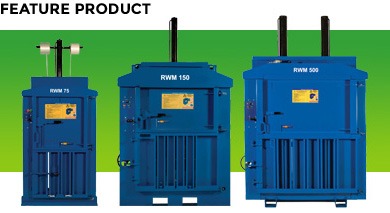Riverside Waste Machinery’s MD Jonathan Oldfield was recently interviewed by facilities management journal Tomorrow’s FM, on the subject of on-site recycling. Keen to pass on as much practical advice as possible, Jon posed 10 top tips when devising a new recycling strategy. If you missed the resulting article, you can read it in full, here…
- Remember the mantra ‘reduce, reuse, recycle’ – it prioritises what we should do with commercial waste and in what order. On a simplistic level, we know it’s better to avoid printing emails unless absolutely necessary for example (reduce); we can reuse unnecessary print outs as scrap paper; and when we’ve finished with the paper, we should recycle. Try to apply this philosophy to all the materials handled on your site.
- Know your legal obligations. Every business has a ‘duty of care’ to store and move waste materials compliantly (see gov.co.uk). This duty lasts until a licensed waste company takes the materials away, but it’s your responsibility to prove their certified competence. There are other rules too – you need a permit if you produce more than 500kg of hazardous waste per year, materials such as plasterboard must remain separate from the main waste stream, and £2m+ turnover companies handling more than 50 tonnes of packaging waste per year must register and report to the Environment Agency.
- Audit your materials – what materials are typically thrown away on your site, on a daily basis, and which could be reused or recycled? Paper, cardboard, aluminium cans, plastic bottles, food? Understanding your waste a little better will help you prioritise where action needs to be taken first, and what specific improvements to make. There’s no harm in starting small, and it makes sense to begin with the most problematic ‘waste’ stream. You could even achieve ISO 14001 certification for your efforts!
- Calculate the cost to dispose of your waste. If you’re not motivated by the environment, focus on the financial incentive. It may even be possible to generate a revenue stream from the sale of your recyclable materials! The rebate value for cardboard, for example, currently stands at £55 per tonne. The rate changes on almost a daily basis, but there is wealth in waste – something that is often overlooked.
- Remember confidentiality – The Data Protection Act means you must handle, store and destroy sensitive paperwork, hard drives, and other private electronic data sources securely. Maximum penalties for data breaches are £500,000. At the very least, invest in the services of a specialist confidential waste contractor who will provide you with secure receptacles for such materials. However, for utmost peace of mind, consider shredding and baling your confidential waste yourself, on your own site. The machinery isn’t expensive to procure, it’s easy to operate and it gives maximum reassurances regarding compliance.
- Seek the advice of industry experts. For smaller companies, simple segregation of materials at source may be enough. Other firms may need specialist recycling equipment to avoid hefty skip charges, so speak to waste machinery providers for advice. Look for wider support too, e.g. from your council, or local commercial and industrial recycling schemes.
- Encourage participation. So many people are expert recyclers in the home, so they may have already had ideas for workplace improvements. Incorporate their suggestions into the new strategy. Then, at ‘roll out’ stage, helpfully communicate what your workforce should do, how and why it’s important, to achieve ‘buy in’. The initiative is more likely to fail if it’s merely the vision of one person.
- Make it easy and fun! We’re increasingly juggling ever-more hectic workloads, so if recycling is complicated, confusing or time consuming people won’t participate. Keep it light-hearted.
- Review and revise. After all this effort, the recycling strategy needs to work. But you might not get it right first time. Evaluate your successes, strive for continuous improvement and make constant tweaks along the way.
- Share your successes, not only with your own employees and/or residents/tenants, but your peers and the wider industry. You might just inspire another facilities manager to follow in your footsteps and, as clichéd as it sounds, every little helps.






